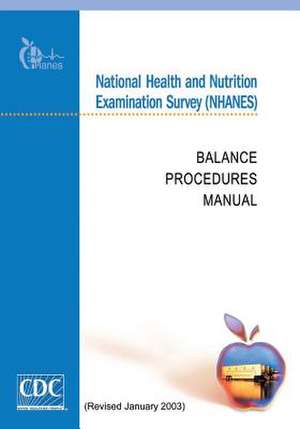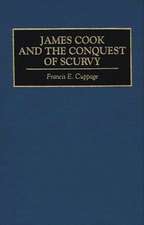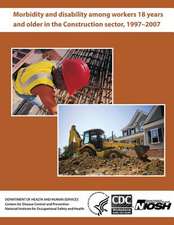National Health and Nutrition Examination Survey (Nhanes)
Autor Centers for Disease Cont And Preventionen Limba Engleză Paperback
| Toate formatele și edițiile | Preț | Express |
|---|---|---|
| Paperback (30) | 76.31 lei 6-8 săpt. | |
| CREATESPACE – | 94.16 lei 3-5 săpt. | |
| CREATESPACE – | 135.82 lei 3-5 săpt. | |
| CREATESPACE – | 76.31 lei 6-8 săpt. | |
| CREATESPACE – | 88.91 lei 6-8 săpt. | |
| CREATESPACE – | 89.53 lei 6-8 săpt. | |
| CREATESPACE – | 94.94 lei 6-8 săpt. | |
| CREATESPACE – | 95.40 lei 6-8 săpt. | |
| CREATESPACE – | 100.88 lei 6-8 săpt. | |
| CREATESPACE – | 101.19 lei 6-8 săpt. | |
| CREATESPACE – | 101.40 lei 6-8 săpt. | |
| CREATESPACE – | 103.94 lei 6-8 săpt. | |
| CREATESPACE – | 107.98 lei 6-8 săpt. | |
| CREATESPACE – | 108.37 lei 6-8 săpt. | |
| CREATESPACE – | 114.39 lei 6-8 săpt. | |
| CREATESPACE – | 120.25 lei 6-8 săpt. | |
| CREATESPACE – | 120.84 lei 6-8 săpt. | |
| CREATESPACE – | 121.02 lei 6-8 săpt. | |
| CREATESPACE – | 121.80 lei 6-8 săpt. | |
| CREATESPACE – | 122.01 lei 6-8 săpt. | |
| CREATESPACE – | 134.05 lei 6-8 săpt. | |
| CREATESPACE – | 148.87 lei 6-8 săpt. | |
| CREATESPACE – | 161.70 lei 6-8 săpt. | |
| CREATESPACE – | 167.74 lei 6-8 săpt. | |
| CREATESPACE – | 168.95 lei 6-8 săpt. | |
| CREATESPACE – | 181.39 lei 6-8 săpt. | |
| CREATESPACE – | 195.75 lei 6-8 săpt. | |
| CREATESPACE – | 221.47 lei 6-8 săpt. | |
| CREATESPACE – | 297.17 lei 6-8 săpt. | |
| CREATESPACE – | 330.84 lei 6-8 săpt. | |
| CREATESPACE – | 359.47 lei 6-8 săpt. |
Preț: 76.31 lei
Preț vechi: 80.34 lei
-5% Nou
Puncte Express: 114
Preț estimativ în valută:
14.61€ • 15.19$ • 12.24£
14.61€ • 15.19$ • 12.24£
Carte tipărită la comandă
Livrare economică 13-27 martie
Preluare comenzi: 021 569.72.76
Specificații
ISBN-13: 9781499269918
ISBN-10: 1499269919
Pagini: 30
Dimensiuni: 178 x 254 x 2 mm
Greutate: 0.07 kg
Editura: CREATESPACE
ISBN-10: 1499269919
Pagini: 30
Dimensiuni: 178 x 254 x 2 mm
Greutate: 0.07 kg
Editura: CREATESPACE





















